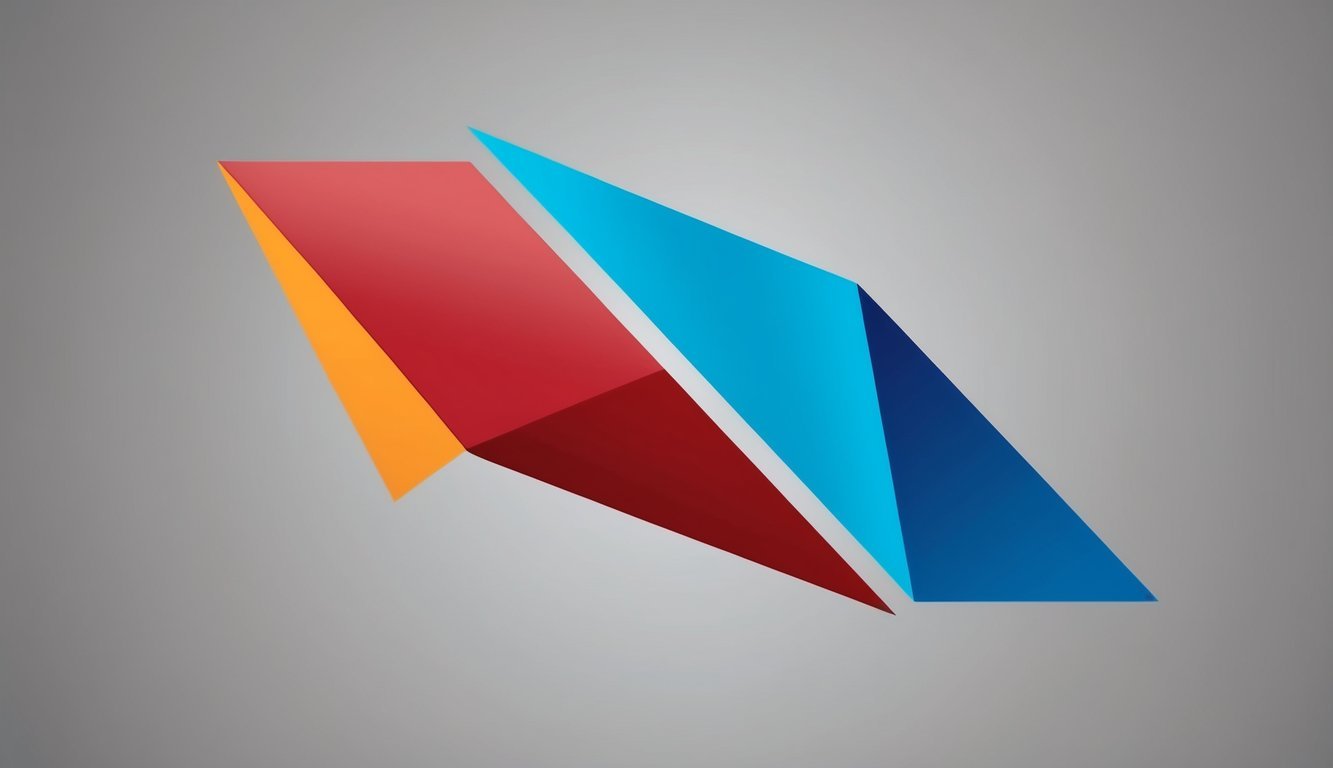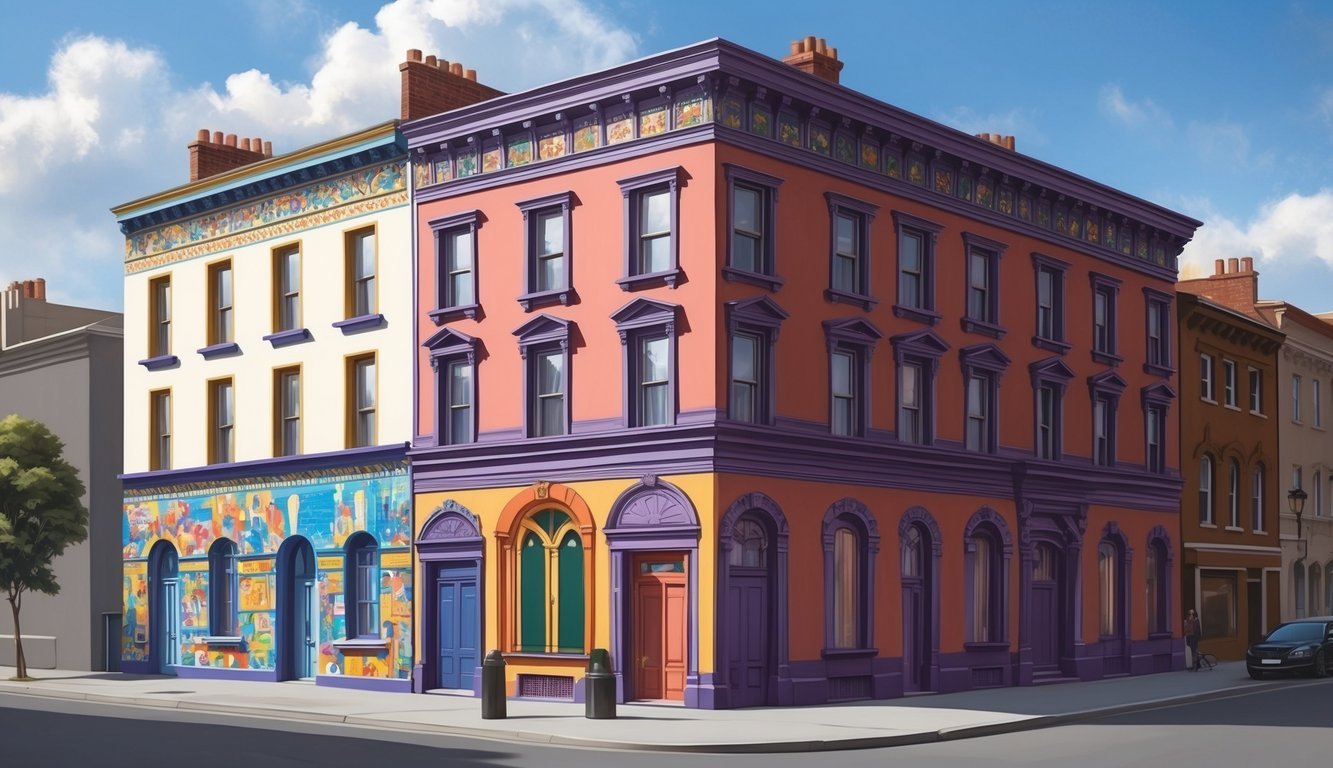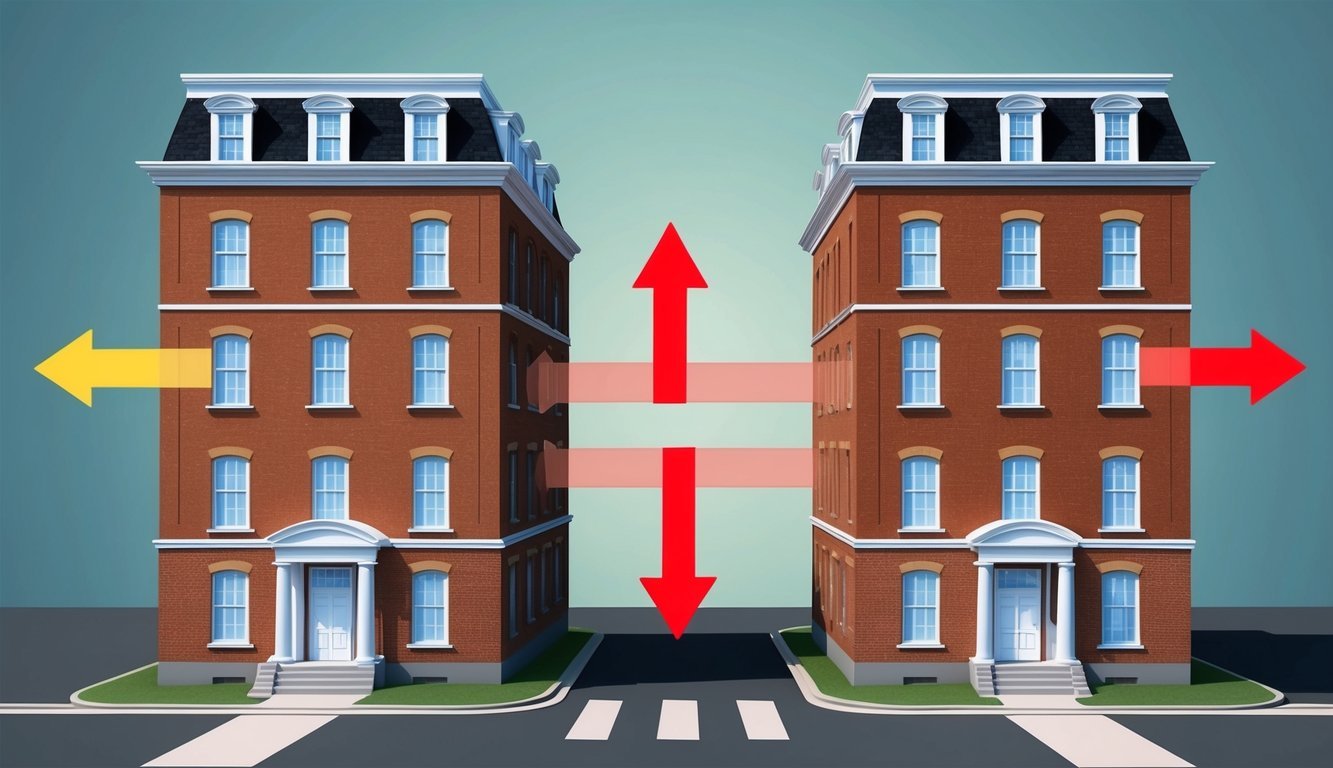When navigating your way around town or even your own neighborhood, you’ve likely heard the term “kitty corner” or its variant “catty corner.” Both phrases mean diagonally located, helping you describe the placement of one building or object in relation to another.
Whether you’re giving directions to a friend or trying to pinpoint a location, knowing these expressions can be quite handy.
You might wonder where these phrases come from and why they both exist.
They share a similar meaning, but regional preferences can affect how often you hear one over the other.
Understanding the origins and usage of these terms adds an interesting layer to your everyday conversations about directions.
So, the next time you find yourself trying to explain where the coffee shop is, remember that “kitty corner” and “catty corner” can help you make your point clearer.
Embracing these terms will not only enhance your vocabulary but also give you a fun linguistic tidbit to share!
Etymology and Variations
Understanding the origins and variations of “kitty corner” reveals not only its linguistic roots but also how the term has adapted across different regions and cultures.
Let’s explore the word’s background, its synonyms, and how it appears internationally.
Origin of the Term
The term “kitty corner” has its roots in the older word “catercorner,” derived from the French word “quatre,” meaning “four.” This connection refers to the four corners of an intersection.
In the 19th century, the term evolved in English, with “kitty corner” becoming popular in various regions of the United States.
Interestingly, “cater” isn’t directly related to cats; it’s more about geometry and angles.
The word has undergone several transformations, including variations like “catty-cornered” and “caddy-corner.” These adaptations reflect both a playful cultural shift and a phonetic simplification over time.
Regional Variations
You’ll find various terms for “kitty corner” depending on where you are in the United States.
For instance, in some Midwestern areas, “catty-corner” is the preferred usage, while inhabitants of the Southern states might favor “kitty-corner” or even “caddy-corner.”
Other interesting variants include “cat-a-corner,” “kiddie-corner,” and “ketty-corner.” Each term maintains the same meaning—indicating something that is diagonally opposite—but varies in pronunciation and spelling according to regional dialects.
This diversity showcases how language evolves uniquely across different locales.
International Perspectives
Globally, similar concepts appear in various languages, though direct translations may differ.
In British English, the term “diagonally opposite” is often preferred, showing a clear regional divergence in expression.
In some French-speaking areas, you might encounter localized phrases that reflect the same geometric idea, although they don’t directly translate to “kitty corner.” Understanding these international perspectives can enrich your appreciation for how a simple term relates to broader linguistic trends.
Grammatical Usage
The phrase “kitty corner” serves specific functions in sentences, primarily as an adjective or an adverb.
Understanding how to use it correctly can enhance your communication and clarity.
As an Adjective
When using “kitty corner” as an adjective, it describes a position or location that is diagonal to something else.
For example, you might say, “The school is kitty corner from the park.” Here, it modifies the noun “school” by indicating its spatial relationship with the park.
In this case, it helps paint a more vivid picture of the location.
You could also say, “She lives in the house that is kitty corner to mine.” This shows that the house you’re referring to is not directly across but at an angle, further clarifying the position you mean.
As an Adverb
As an adverb, “kitty corner” indicates the direction in which something is located.
For instance, you might state, “The store is located kitty corner to the bakery.” In this usage, it describes where the store is in relation to the bakery.
You can also use it in more complex sentences like, “He parked his car kitty corner from the entrance.” This communicates the diagonal placement of the vehicle concerning the entrance.
This usage adds clarity and detail to your writing, making it easier for your reader to visualize the scene.
Mathematical and Geometric Context

Understanding the concept of “kitty-corner” involves exploring its mathematical and geometric implications.
This term relates to position and orientation, often utilized in reference to arrangements or placements across a space.
Here are two essential aspects to consider.
Geometry of ‘Kitty-Corner’
In geometry, “kitty-corner” describes a position where two objects or points are located diagonally across from each other.
Imagine a square or rectangular grid, such as the layout of a city block.
When you place one point at the bottom left corner, its kitty-corner counterpart will be at the top right corner.
This diagonal relationship can be outlined as follows:
- Points: A and B
- Location: Diagonal from one another
- Distance: You can visualize this as moving obliquely across, rather than straight along the edges.
This understanding helps in various applications, such as urban planning or even game design with dice where moving diagonally can alter strategy.
Measurement and Distance
When measuring distances in a kitty-corner context, using the diagonal can offer a more efficient route.
In a right-angled triangle formed by these points, you could leverage the Pythagorean theorem.
For example, if each side of a square is 4 units, the diagonal distance, or kitty-corner distance, from one corner to the opposite corner is:
- Calculation:
- [ c^2 = a^2 + b^2 ]
- [ c = sqrt{4^2 + 4^2} = sqrt{32} approx 5.66 ]
Hence, being aware of these diagonal measurements can save time and effort, as moving across can often be shorter than traversing the edges.
Cultural and Colloquial Uses

The terms associated with “kitty corner” reflect diverse cultural nuances and colloquial expressions.
They often illustrate how language evolves in everyday communication across various contexts.
Let’s break down some of these usages.
In Literature and Speech
In literature, “kitty corner” often pops up to describe positions or settings.
Authors use it to create vivid imagery of a place that is diagonal or off-center.
For example, a character may refer to a house as being kitty corner from a store, helping readers visualize the scene clearly.
You also encounter similar terms like “catawampus” or “cattywampus,” which convey a sense of disorder or something being out of alignment.
These words inject color into dialogue, making characters sound relatable and grounded.
Dialogues within novels or plays may feature these terms to reflect regional dialects.
This usage connects characters to their environments and illustrates local speech patterns.
Whether it’s in casual conversation or an engaging novel, these terms enrich the narrative.
In Pop Culture
In pop culture, “kitty corner” and its variations have become catchy phrases.
You might hear them in movies or TV shows, where characters describe locations in a humorous or casual manner.
Think of a character saying, “It’s over there, kitty corner to the old diner,” to add charm to their speech.
These expressions often appear in social media discussions where users reference changes or placements in a playful way.
For instance, “That shelf is all cattywampus” can humorously describe an unbalanced shelf.
Moreover, the playful nature of these terms makes them memorable.
Their quirky sound captures attention and resonates with a younger audience.
This engagement showcases how language stays vibrant and relevant in modern conversations, connecting various generations.
Related Terms and Confusions

Understanding the terms connected to “kitty corner” can clear up common misconceptions.
While similar phrases can create confusion, knowing their meanings will enhance your language skills.
Common Misapplications
You might hear “kitty corner,” “catty corner,” and “cater-corner” used interchangeably, but they refer to the same concept of something positioned diagonally.
These terms originate from the same root, but regional usage can differ.
In some areas, people may favor “catty corner.”
Be cautious when using “kiddie corner,” as that term refers to a play area for children, not a diagonal position.
Misusing terms can lead to confusion, especially in conversations about directions or positioning.
Clarifying ‘Kiddy Corner’
“Kiddy corner” is a common misinterpretation of “kitty corner.” While you might hear people use it, it holds a distinct meaning.
Kiddy corner specifically refers to spaces designated for kids, like play areas in parks or schools.
Using “kiddy corner” in the context of direction can mislead your listener.
Stick with “kitty corner” or its variants to convey a diagonal placement accurately.
Remember, context is crucial.
So when giving directions, clarity helps avoid misunderstandings.
Dictionary Definitions
Understanding how “kitty corner” is defined in various dictionaries can help clarify its usage and meaning.
Below are interpretations from well-known dictionaries and alternative entries that provide a broader perspective.
Merriam-Webster’s Interpretation
Merriam-Webster defines “kitty-corner” as being positioned in a diagonal or oblique manner.
You’ll come across this term often in directions, such as when describing the location of a building across a street from another.
Interestingly, Merriam-Webster also discusses variants of the term, including “catty-corner” and “catercorner.” Each of these terms conveys a similar diagonal positioning but reflects the evolving nature of the English language.
Regardless of the variation, the core meaning remains consistent, emphasizing the spatial relationship between two points.
This makes it a handy term in everyday navigation and communication.
Alternative Dictionary Entries
Various other dictionaries also provide insights into the term “kitty corner.” For instance, the Cambridge Dictionary suggests that “kitty-corner” is synonymous with “catty-corner,” reinforcing its meaning as diagonal.
The Free Dictionary expands upon this by noting different pronunciation and spelling variations, including “catercornered” and “kitty-cornered.” Each alternative retains the same fundamental meaning, showing how language can diversify while still expressing a single concept.
In contrast, Vocabulary.com simplifies this to state that it describes something slanted across an area on a diagonal line, which effectively captures the term’s essence without unnecessary complexity.
These varying definitions reveal the term’s versatility and enduring presence in the English language.

